Building an IVR Flow to Collect SMS Consent and Send a Message
This article provides best practices for verifying or collecting a caller's consent before sending them a text message.
Note that there are multiple IVR actions and conditions in this flow that will be individually built. You can learn about with their dedicated linked articles.
Use Case
- You'd like to remain 10DLC compliant and offer a caller an automated SMS message to their number
Recommended IVR Flow
Though your exact needs may vary, it's recommended your IVR flow takes the following steps once a caller in an IVR or skill queue has opted to receive an SMS message. Note that this does not cover requesting a text from a live agent unless the agent wraps up the call and sends the caller to this IVR.
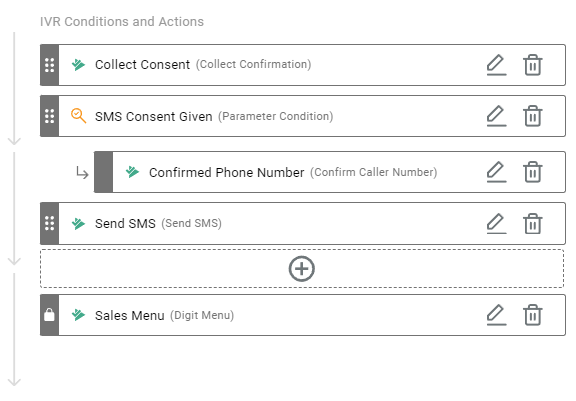
-
Caller enters a dedicate IVR Flow built to focus on these steps.
-
"Collect Confirmation" Action
-
This will be used to collect consent from the caller to receive SMS messages.
-
Set the session parameter as "SMS_Consent" or similar. Note this parameter name as you'll need it later.
-
Set the "Consent Announcement" message with a full 10DLC opt-in prompt. The message should end with having the customer press "1" to accept or "2" to withhold consent.
- Check current 10DLC opt-in requirements. At the time of this articles creation, your prompt should include:
- Your brand name
- Message frequency disclosure
- "Message and data rates may apply" disclosure
- Customer care contact information (Text HELP for help, contact [email address] for support, etc.)
- Opt-out information (Text STOP to cancel)
- Where a customer can find your Privacy Policy and Terms of Use documentation.
- Check current 10DLC opt-in requirements. At the time of this articles creation, your prompt should include:
-
Learn more about the Collect Confirmation action here
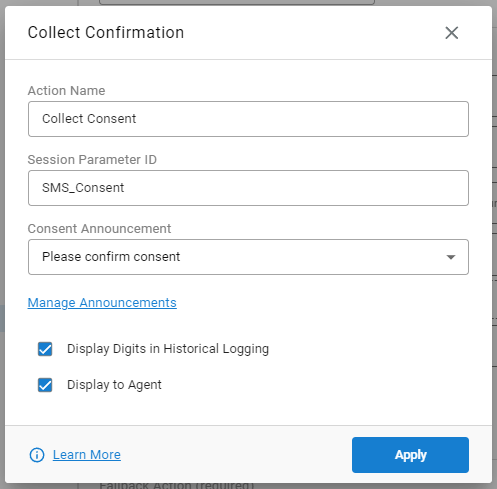
-
-
"Parameter Condition" Action
-
Though you'll quickly want to have a customer verify their best SMS number, there is no need to offer the number collection step if they did not give consent in the step above. Using a Parameter Condition here will help determine if consent was officially given first.
-
Set the conditional check to look for the session parameter defined in the Collect Confirmation step and if it "is True"
- The "True" value was set if the customer pressed "1" during the Collect Confirmation Step
-
If using this method and the condition is met, you can use the "Confirm Caller Number" and "Send SMS" actions as sub-actions for the condition.
-
Learn more about Parameter Condition options here.
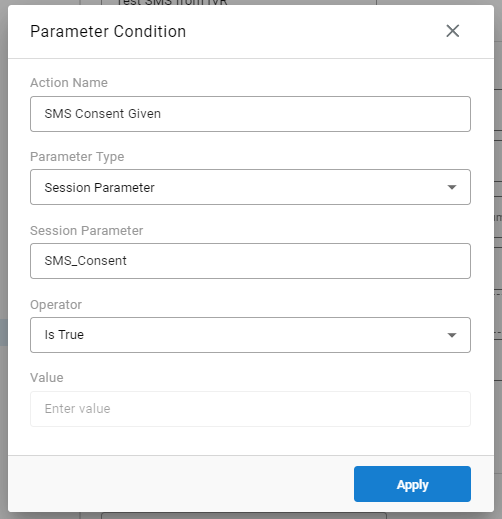
-
-
Create a sub-action for "Confirm Caller Number" under the Parameter Condition made in step 4.
-
Using this as a sub-action only has the customer go through the steps of setting their best phone number if consent was given.
-
This step is technically optional as you could just have the SMS sent to the caller's recognized caller ID number.
But, in the event they're not calling from a phone that can receive text messages OR they are using a blocked number, offering this step allows them to verify or provide the best number. -
Review the dedicated article for this action for a full understanding. The important thing to not here is the session parameter name assigned in this step. In this example, I set the verified number as "PhoneNum"
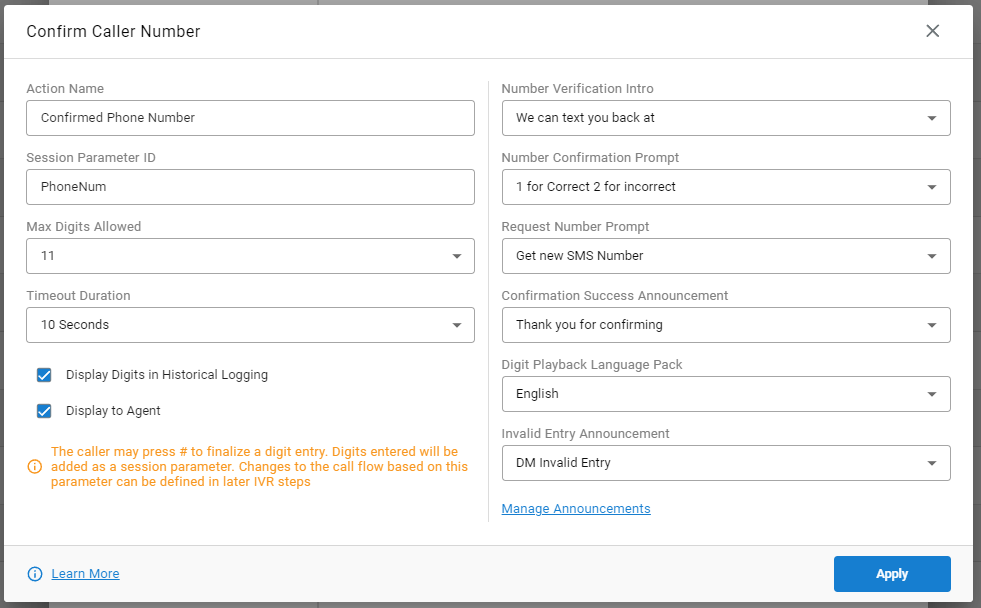
-
-
"Send SMS" Action
-
For a full breakdown of this feature, review the article here.
-
You'll use the two saved session parameter names in this menu:
-
"Consent Parameter" will need to match what you used in step 2 above.
-
"Target Number Session Parameter" will need to match the name used in step 4
-
You'll need to select "Verified Number" under the "Target Number Source" to switch to this method.
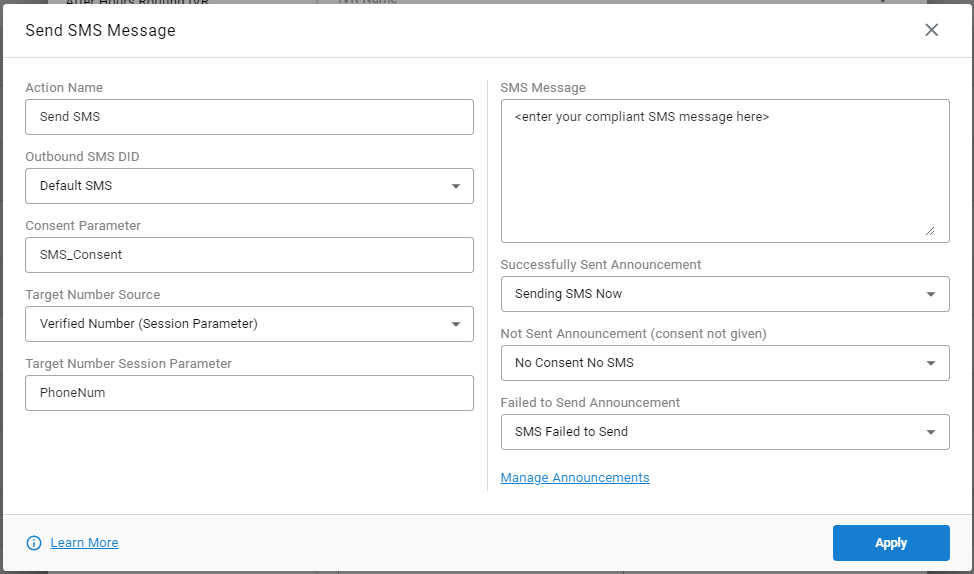
-
-
(Optional) Use a Parameter Condition Action before all of these steps to first check if the caller has already provided consent.
- This could be following a data base dip if you store flags for clients who have given SMS consent
- If it's likely that caller gave consent in a previous IVR on the same call or has likely returned to this IVR
- If used correctly, you can skip collecting consent again and move onto other steps to confirm their number and/or send the SMS.
-
End the IVR with your desired termination action. This could be sending the caller back to a digit menu they were last in, transferring them to another IVR, or dropping the call as just a few examples.
-
As always, save your changes by making your new IVR live with the "Make Live" button.
Updated about 1 month ago
